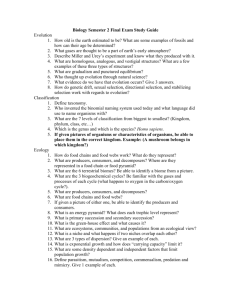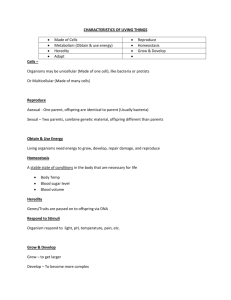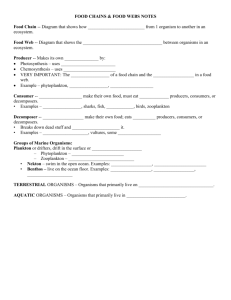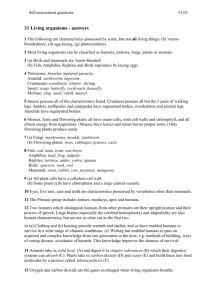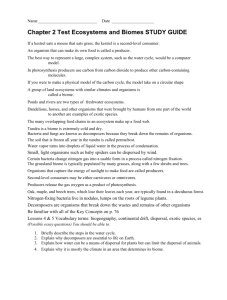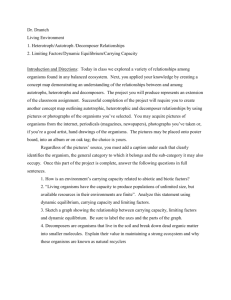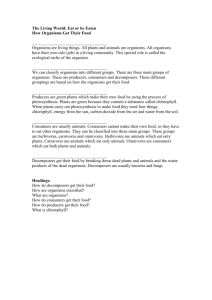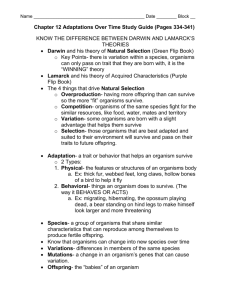The Simple Bare Necessities of Life
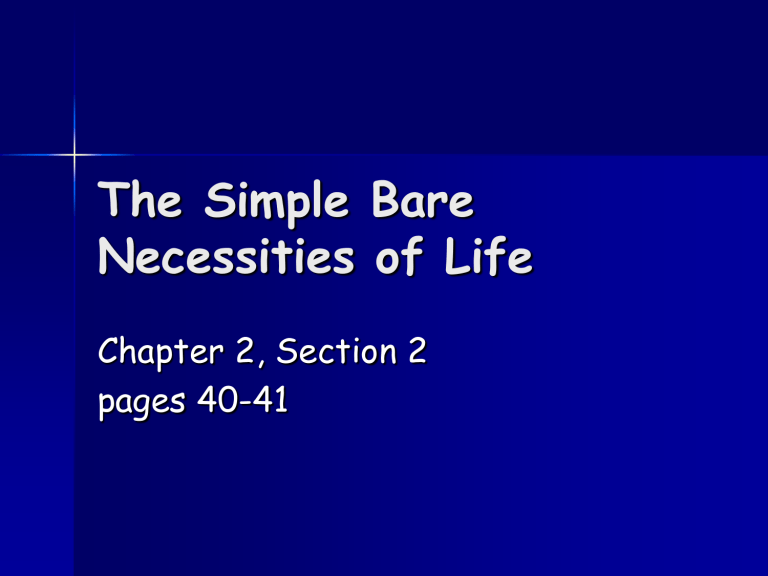
The Simple Bare
Necessities of Life
Chapter 2, Section 2 pages 40-41
Food
provides organisms with the energy and raw materials needed to:
– carry on life processes
– build and repair cells
– build and repair body parts
How organisms get their food
producers - make their own food
– plants
use energy from the sun, water, and carbon dioxide
– microorganisms in the Movile Cave
use chemicals in their environment
How organisms get their food (cont.)
consumers – must eat (consume) other organisms to get their food
– examples – mammals, reptiles decomposers – must break down nutrients in dead organisms or animal waste to get their food
– examples – fungi, bacteria
Water
most of the chemical reactions involved in metabolism require water
– most living cells are 70% water
– humans can survive about three days without water
Air
mixture of several gases
– mostly nitrogen, oxygen, and carbon dioxide most living things use oxygen to release energy from food some organisms also need carbon dioxide for photosynthesis (process of converting energy in sunlight to energy in food)
A Place to Live
somewhere to live that contains all the things they need to survive some organisms require a large amount of space
– elephant some organisms do not require very much space at all
– bacteria
A Place to Live (cont.)
space on earth is limited
–creates competition for territory
Closure Questions
2.
3.
1.
4.
Why are decomposers categorized as consumers? How do they differ from producers?
Why are most cells 70% water?
Could life as we know it exist on
Earth if air contained only oxygen?
How might a cave, an ant, and a lake meet the needs of an organism?
